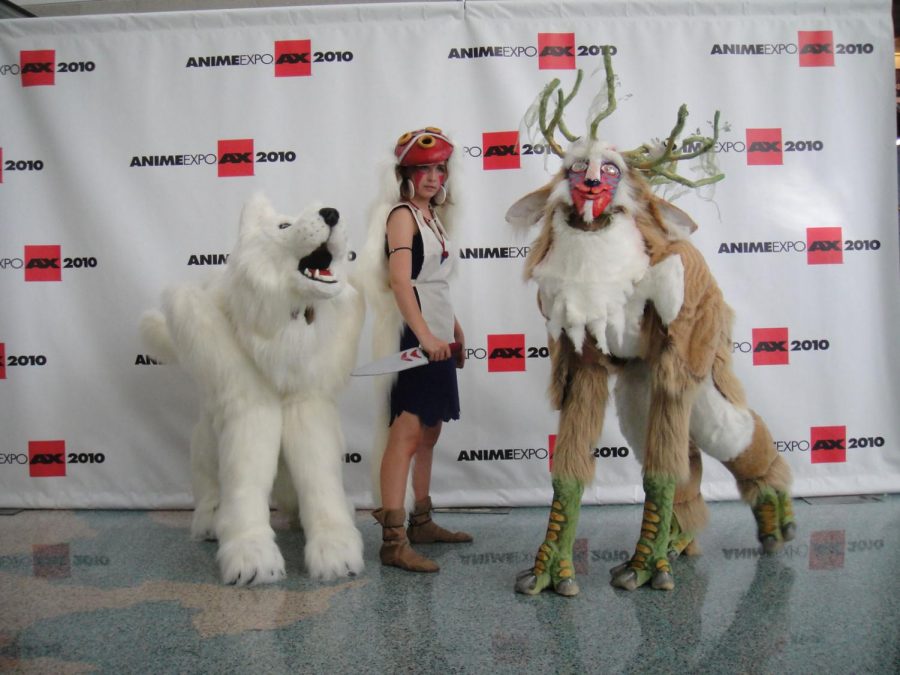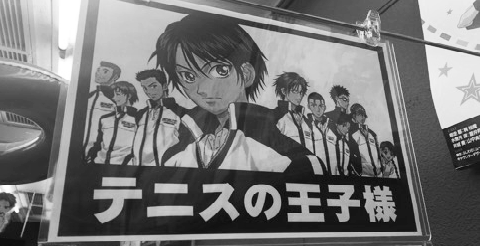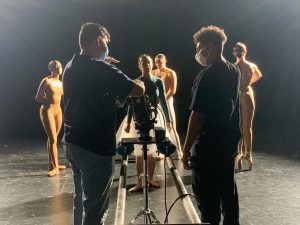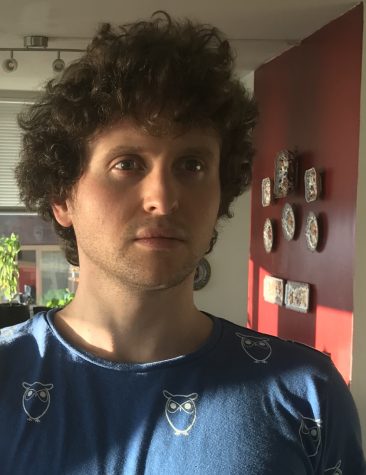Not Safe for Sunday Morning: Anime Ruminations
THE POP CULTURE GEEK VIA FLICKR
“Princess Mononoke” fans pose at a convention in 2010. There is no better way to start your journey into Japanese style than with this movie.
December 8, 2020
A typical day changed my life forever. It was sunny outside, but I was about to begin a journey into the heart of darkness.
My hometown of Princeton, New Jersey, was buzzing with activity. Students from the university may have been enjoying the summer weather, loading up on peanut paradise ice cream from Halo Pub or cold sodas and hoagies from Hoagie Haven.
I was avoiding the sun with my high school pack of basement-dwelling male virgins. We had no ambition beyond venturing to a tiny store called Knight Dreams to rent a movie called “Ninja Scroll,” an anime set in Japan’s turbulent Edo period. It was supposed to be awesome.
We took it into the basement and watched it. There was nudity. There was violence. It was all hand-drawn. I remember feeling sick. It was exciting, but it was also kind of beautiful.
We all felt that some brilliant lunatic in Japan understood us for the first time, and was able to shock our brains free of our usual morbid self-obsessions.
There was a blind sword fighter who used the noises of a bamboo forest to give himself sight through sound. There was a demon whose body was a hive containing millions of hornets. There was an overarching plotline that confronted political greed and grappled with the difficulties of emotional intimacy — Schopenhauer’s so-called hedgehog’s (or porcupine) dilemma, a topic sometimes revisited in anime. It was not Scooby-Doo Mysteries. It was Sturm und Drang. I mean, it was really deep stuff.
The dark themes were refreshing. American cartoons would give me sunshine, laughter and puppies until I wanted to puke. Every time my pod of losers would sample the latest conquest from Knight Dreams, I felt a sense of relief, as though greeting an old fling, someone who understood I wasn’t innocent.
That familiar darkness, the eroticism, the violence, the sweet nectar of taboo. I imagined myself, in a bizarre flash of fantasy, as a cowboy-hatted country singer, crooning out a love song to the dark themes of Japanese animation; something along the lines of Dolly Parton’s “I Will Always Love You,” with a splash of Johnny Cash darkness.
Anime became my significant other.
There was a storm cloud of darkness building inside all of us back then; the pain and awkwardness of puberty, frustrated libidos and the routine malaise of teenagers were just the tip of that iceberg. Anime displaced it. We all felt that some brilliant lunatic in Japan understood us for the first time, and was able to shock our brains free of our usual morbid self-obsessions.
Anime’s “adult content” doesn’t necessarily refer to pornographic material like hentai. It can refer to anime’s ability to conduct the kind of pithy explorations rarely attempted even within our own cinematic mainstream.
We need to hold anime to the same standard as cinema in order to appreciate it as art.
Mike Pixley (of YouTube’s Bonsai Pop) described how “Ninja Scroll” affected his sheltered teenage existence, “There was, indeed, boobies,” he said in a video. “But more than that, I felt that the entire experience was extremely liberating. I had never seen anything so violent and explicit in my entire life. I was completely fascinated by the film.”
Pixley continued to explain that within the dark fantasy of “Ninja Scroll,” “We see the savagery of strength and the ugliness of the times — people are ugly and deformed, as nasty outward as they are on the inside, or as beautiful as they are venomous. There’s an air of dark magic that emanates from the characters.”
Anime isn’t always violent or sexually explicit, but when it is, these motifs are often used to make a bigger point. Anime is alternately condemned for being childish or explicit, but these criticisms stem from our expectations of cartoons. We need to hold anime to the same standard as cinema in order to appreciate it as art.
In “Ninja Scroll,” and anime broadly, villains change sides and heroes are sometimes swayed by evil. Protagonists are not guaranteed to carry the day. Endings are surprising. The Judeo-Christian framework in the West is concerned primarily with good and evil. Japan remains a Shinto-dominated culture less concerned with good versus evil than purity versus impurity. Anime reflects this tension.
It also influences American culture. The cult classic “Akira,” which I highly recommend, is Kanye West’s favorite film. He described it as his “biggest creative inspiration.” West has been known to blend musical styles just as “Akira” blended ancient and modern instruments for its soundtrack.
“Perfect Blue,” one of my favorites, inspired the entire plot of “Black Swan” and the bathtub scene in “Requiem for a Dream,” for which director Darren Aronofsky bought the rights to the anime for $65,000. “Paprika” is widely seen as the inspiration for the visuals and concepts of “Inception.”
Don’t let cartoon stereotypes (or anything else) dissuade you.
“Ninja Scroll,” “Akira” and especially “Ghost in the Shell” all influenced “The Matrix.” I highly recommend “Ghost in the Shell.” It was so significant to The Wachowskis, writers and directors of “The Matrix,” that they used it to express their concept to producer Joel Silver. Along with Jean Baudrillard’s “Simulacra and Simulation,” “Ghost in the Shell” was conceptual bedrock for the film that revolutionized American action cinema by blending Japanese anime and Hong Kong kung fu with French philosophy.
Diana Vreeland, former editor-in-chief of Vogue magazine, said, “God was fair to the Japanese. He gave them no oil, no coal, no diamonds, no gold, no natural resources—nothing! Nothing comes from the island that you can sustain a civilization on. What God gave the Japanese was a sense of style—maintained through the centuries through hard work and the disciplines of ambition.”
There is no better way to start your journey in true Japanese style than by watching “Princess Mononoke.” At the time of this writing, you can buy the DVD with free shipping for under $5 on eBay. It’s available for streaming on HBO Max, iTunes, VUDU, Google Play and YouTube.
The anime wrestles with the tension of environmental preservation versus industrial development and in-group/out-group psychology. It delivers action and adventure, joy and sorrow. It boasts a 93% approval rating on Rotten Tomatoes.
There is an impressive collection of anime on Netflix, including the superb “Neon Genesis Evangelion,” the magical “Mushishi” and the heart-thumping “Ajin: Demihuman.” Hulu offers great anime classics as well. Streaming sites such as Funimation, Kissanime and the popular Crunchyroll are free, but their poorly organized and immense libraries can be difficult for a newbie to navigate, and those libraries are lacking some classics.
Don’t let cartoon stereotypes (or anything else) dissuade you. This winter break, consider engaging with the style of Japan. However you find it, consider watching an anime.















